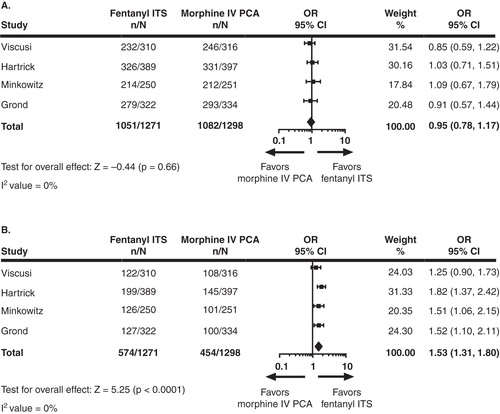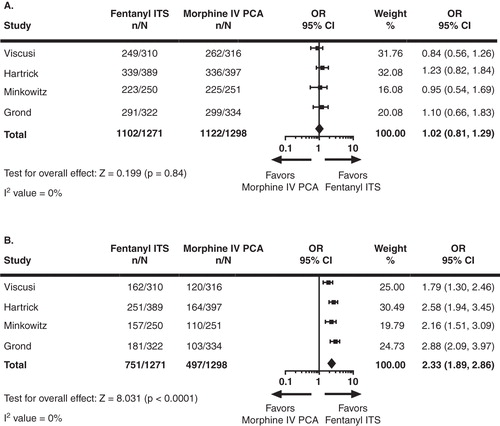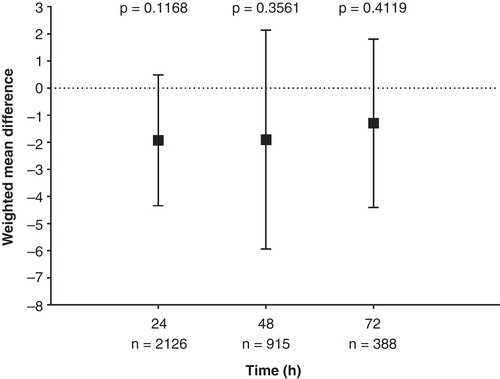Figures & data
Table 1. Overview of included studies and subject characteristics*.
Figure 1. (A) PGA ratings of Success at 24 h. (B) PGA ratings of Excellent at 24 h. For PGA Success missing assessments were treated as failures and for PGA Excellent missing assessments were treated as non-excellent response. Odds ratio (95% CI) and p-values were based on logistic regression with treatment as effect for individual studies, based on random effect model for meta-analysis for ‘Total’ in the figure.

Figure 2. PGA responder rates at 24, 48 and 72 h. Plot shows estimated odds ratios and 95% CIs at each time point. p-values shown are for test for overall treatment effect (HO: OR = 1 vs HA: OR ≠ 1) at each time point between the fentanyl ITS and morphine IV PCA treatment groups. I2 values for PGA success at 24, 48 and 72 h were 0, 62 and 11%, respectively; I2 values for PGA ratings of ‘excellent’ at 24, 48 and 72 h were 0, 0 and 0%, respectively.

Figure 3. (A) IGA ratings of Success at last assessment. (B) IGA ratings of Excellent at last assessment. For IGA Success missing assessments were treated as failures and for IGA Excellent missing assessments were treated as non-excellent response.Odds ratio (95% CI) and p-values were based on logistic regression with treatment as effect for individual studies, based on random effect model for meta-analysis for ‘Total’ in the figure.

Figure 4. Weight mean difference is mean pain intensity at 24, 48 and 72 h. Plot shows estimated weighted mean differences and 95% CIs at each time point. p-Values shown are for test for overall treatment effect (HO: WMD = 0 vs HA: WMD ≠ 0) at each time point between the fentanyl ITS and morphine IV PCA treatment groups. Pain was assessed on a scale from 0 (no pain) to 100 (worse possible pain). A negative weighted mean difference results in less pain in patients treated with fentanyl ITS compared with morphine IV PCA. I2 values at 24, 48 and 72 h were 55, 67 and 0%, respectively.

